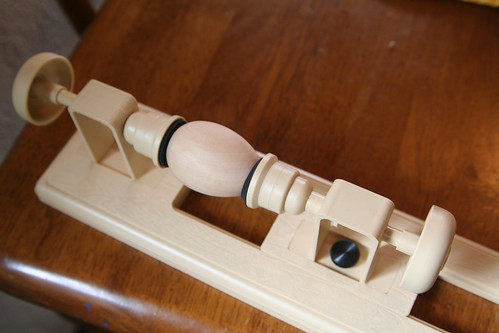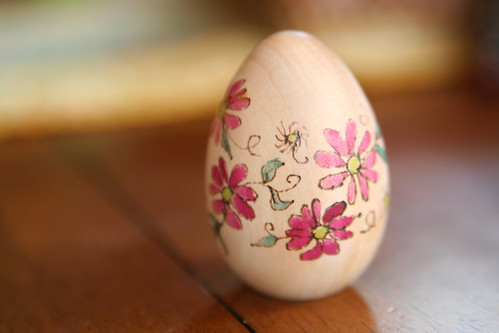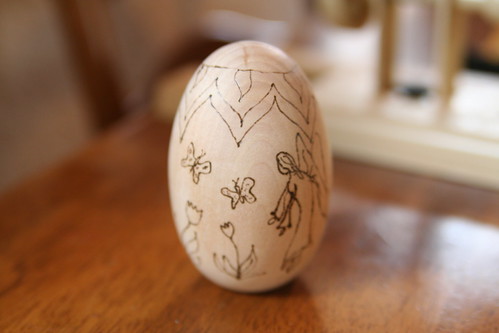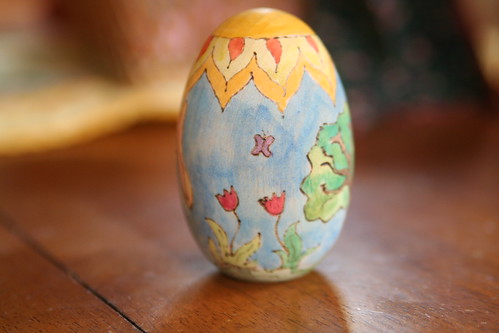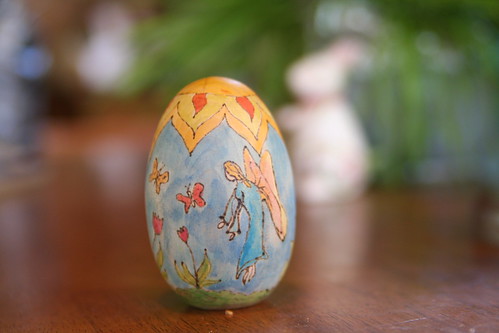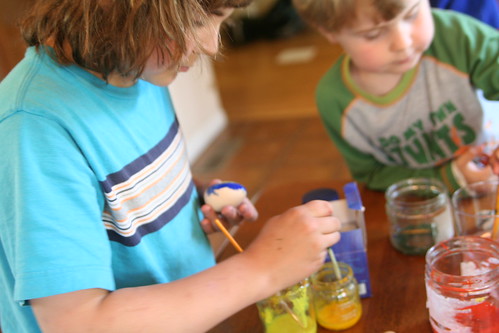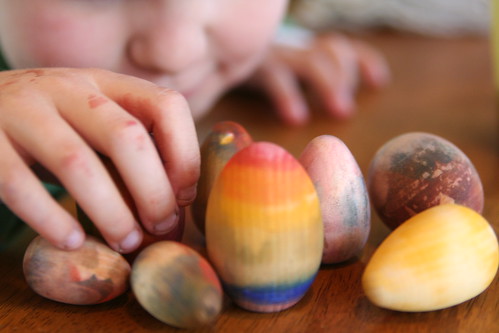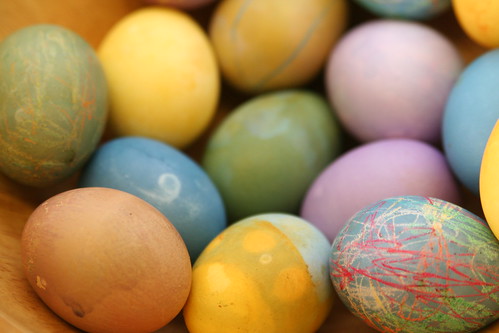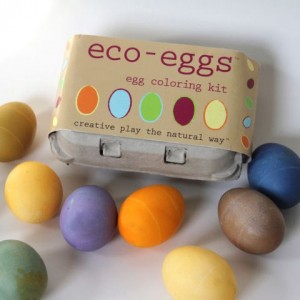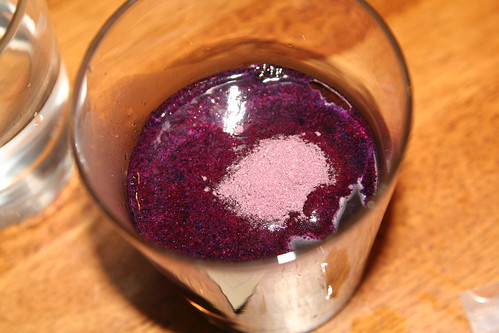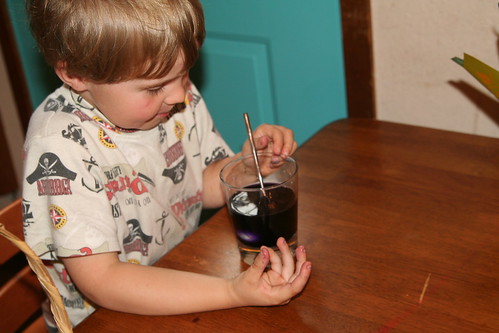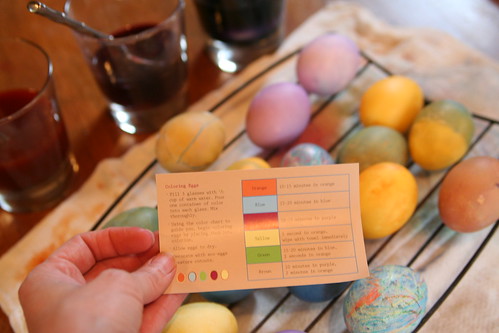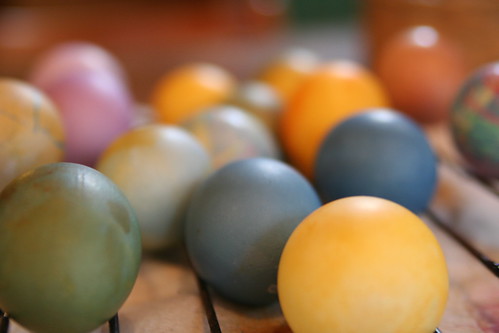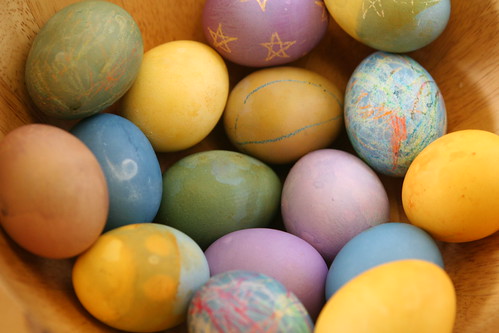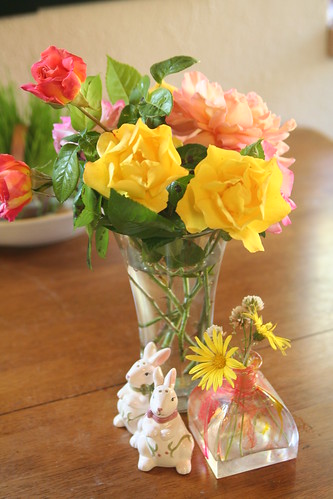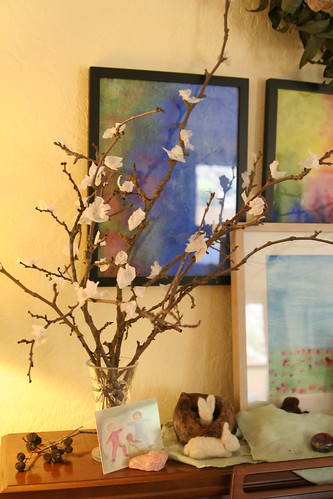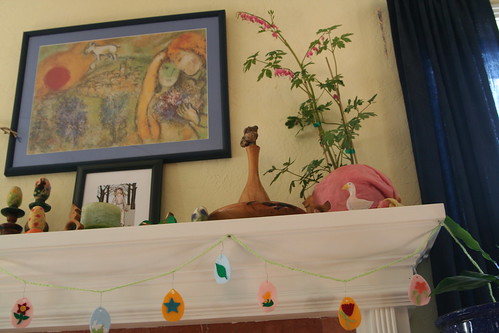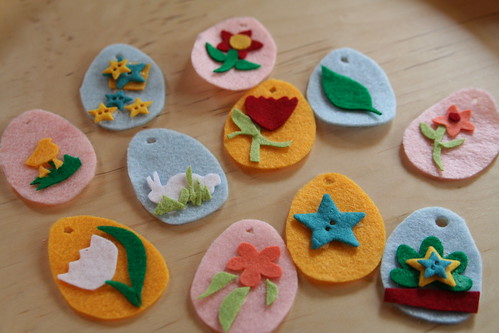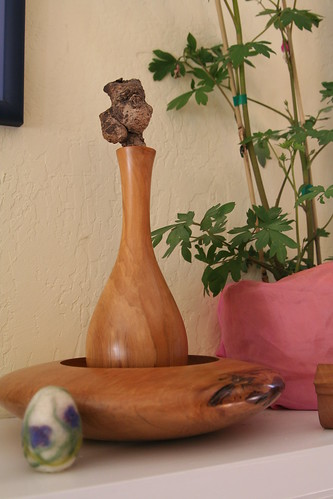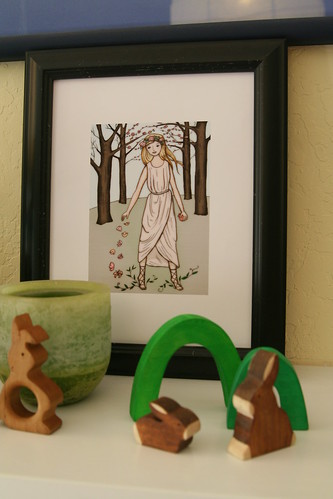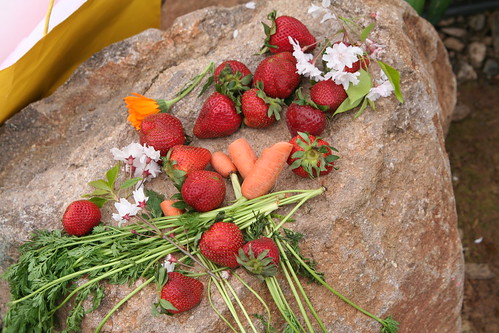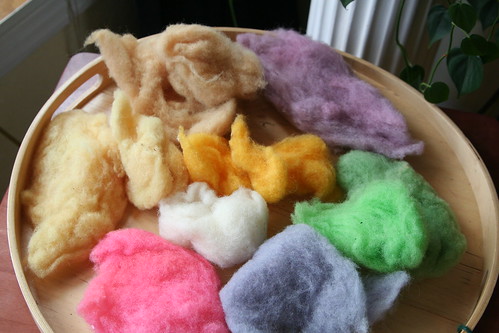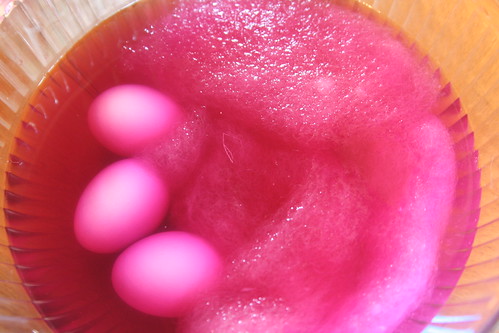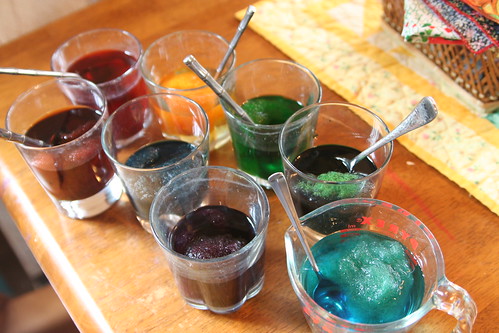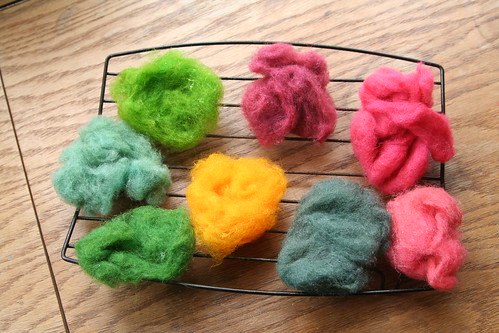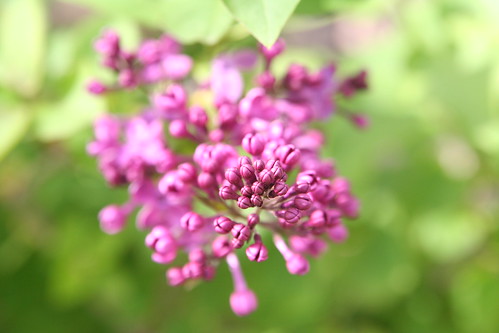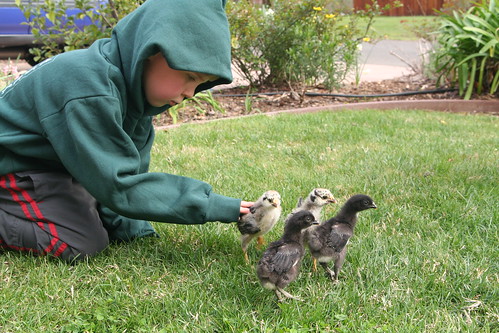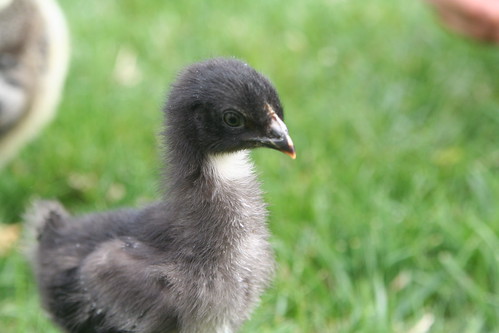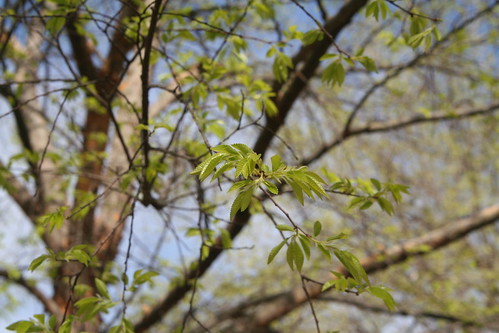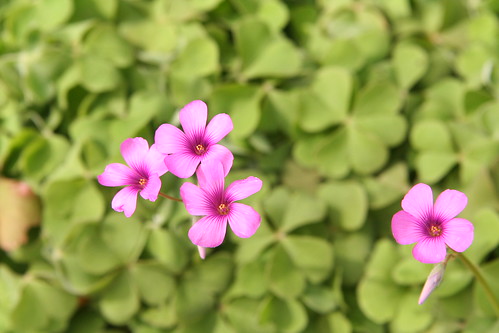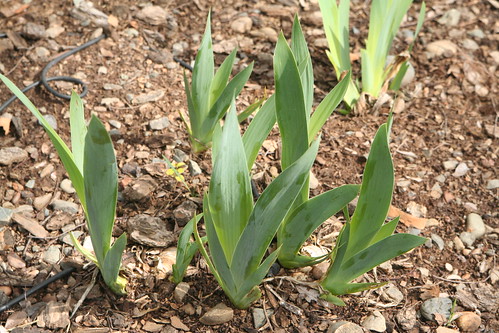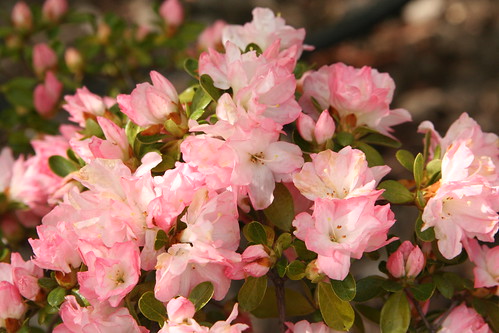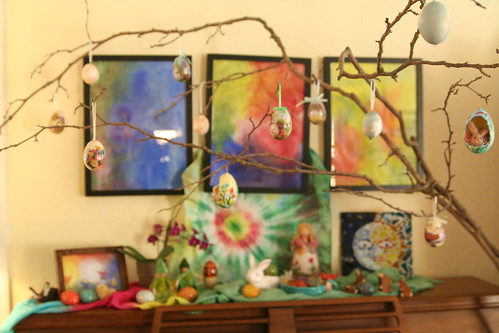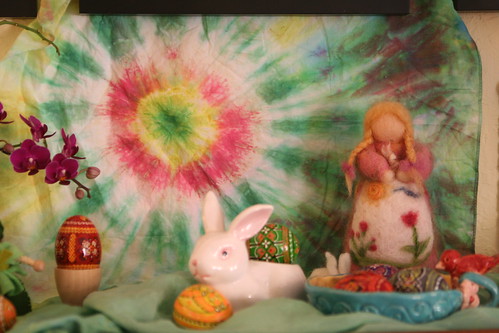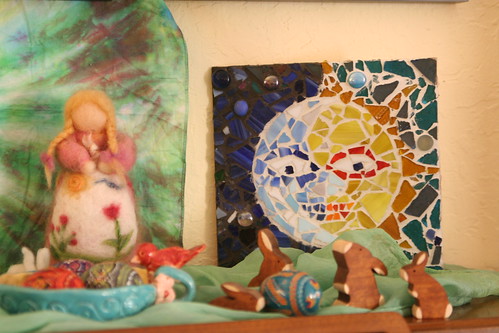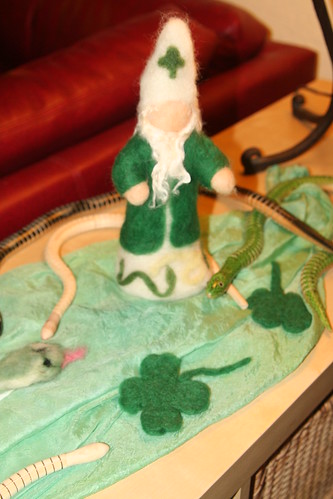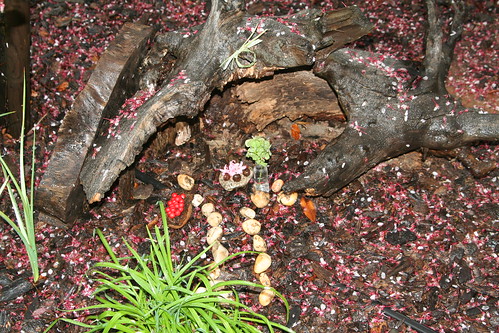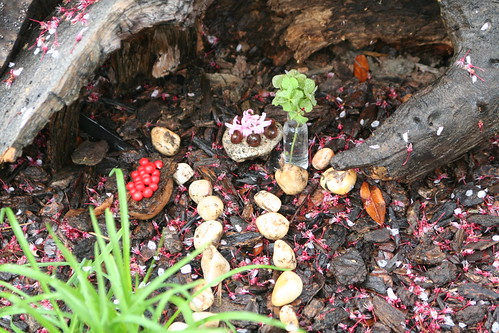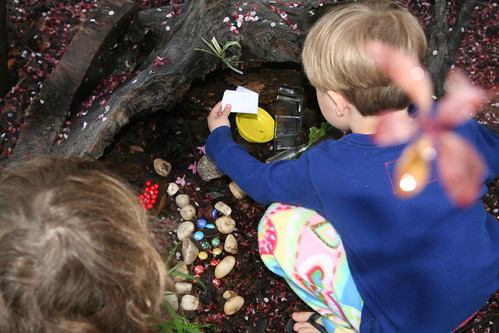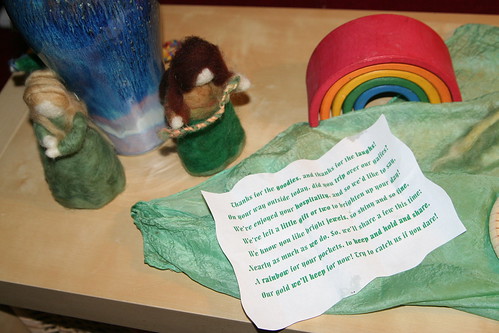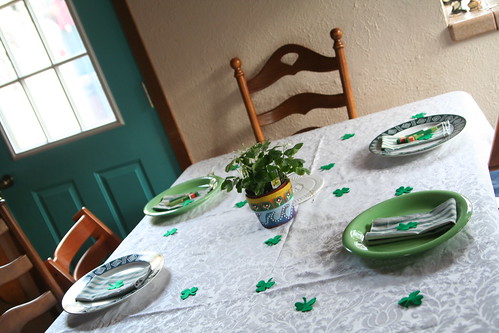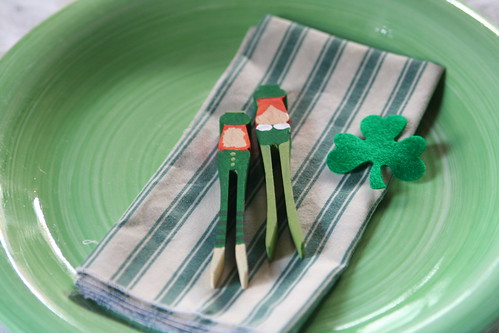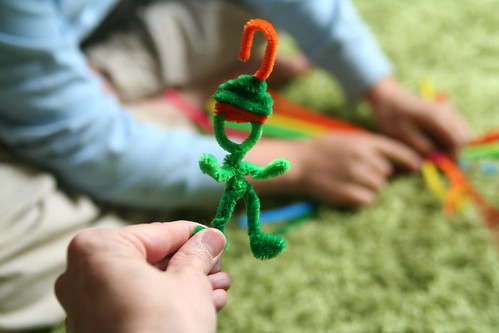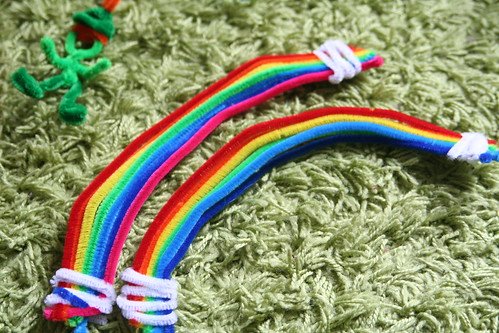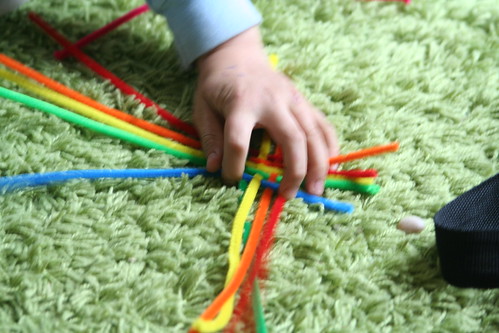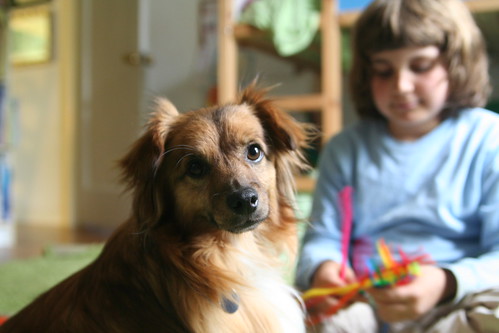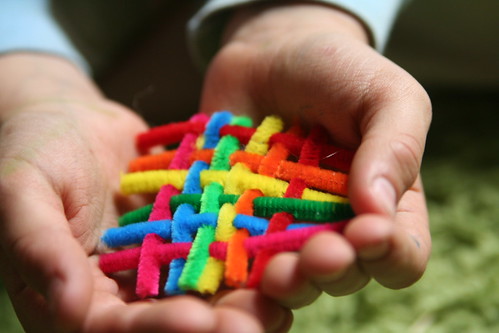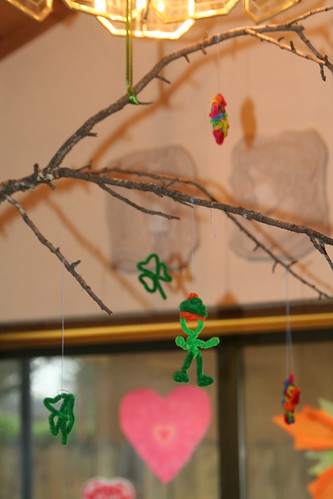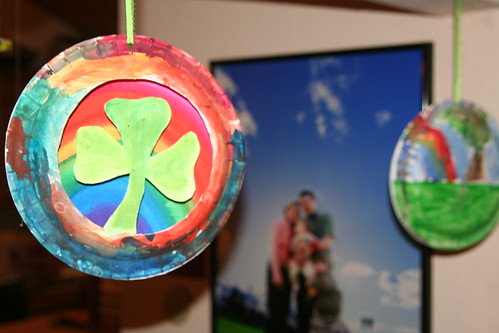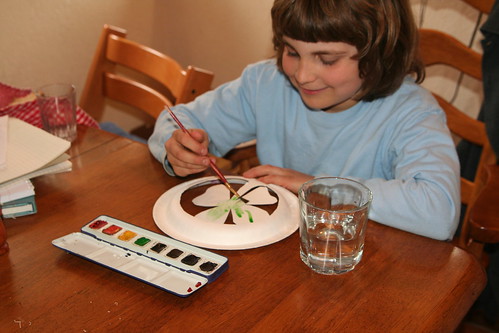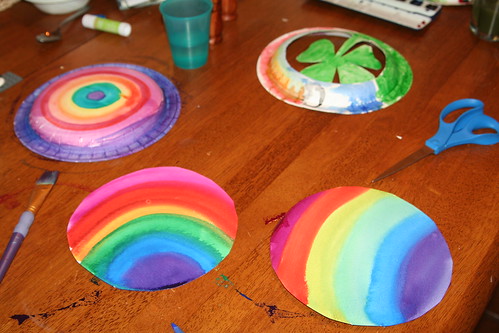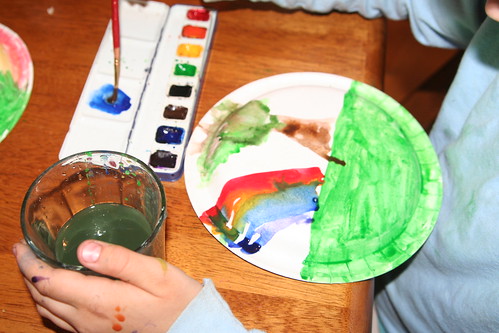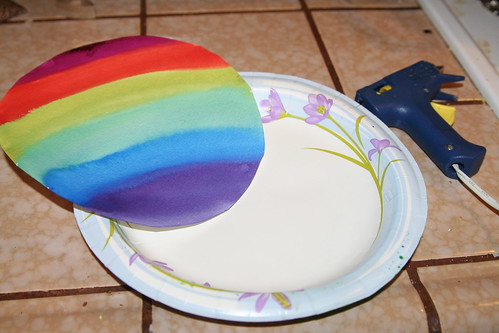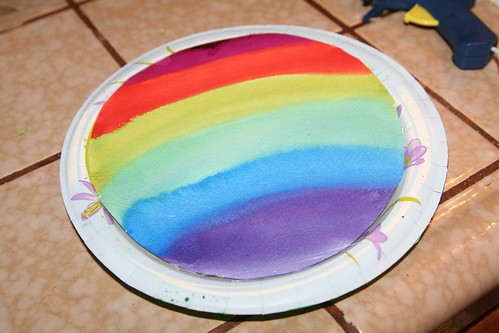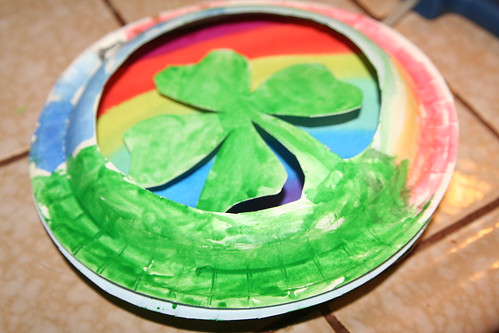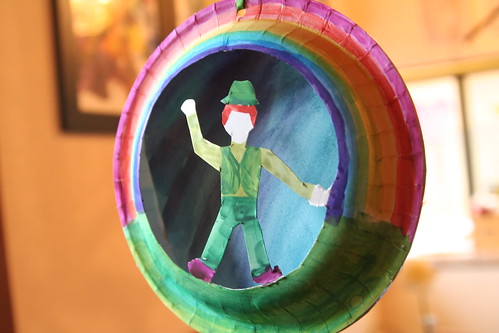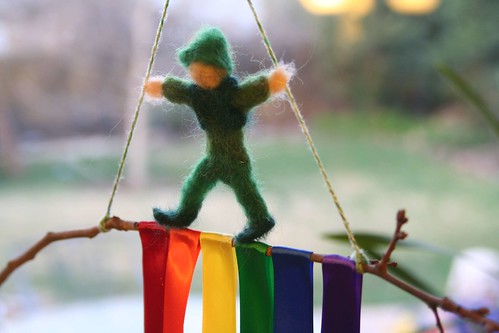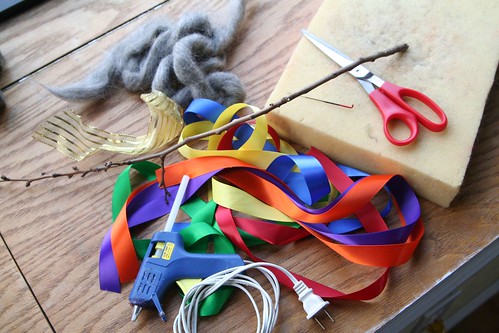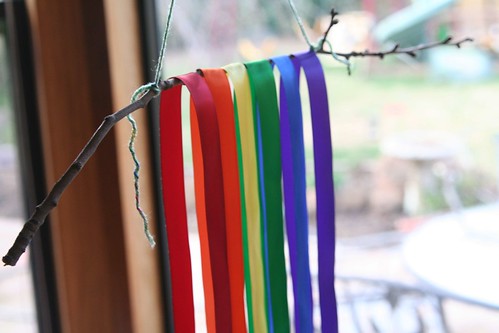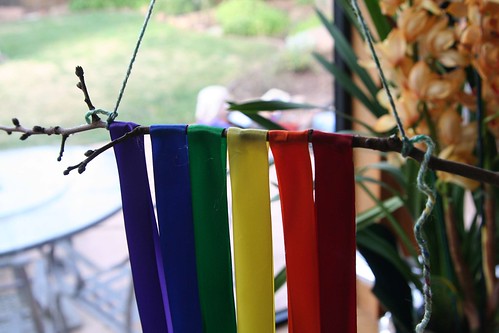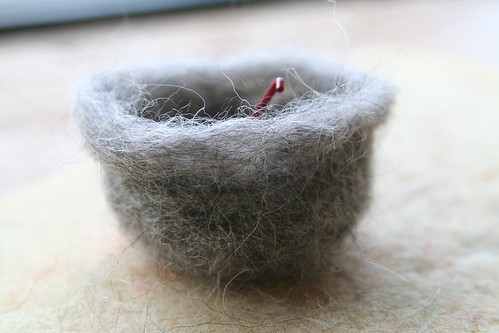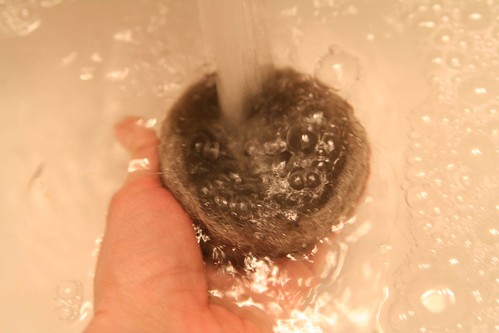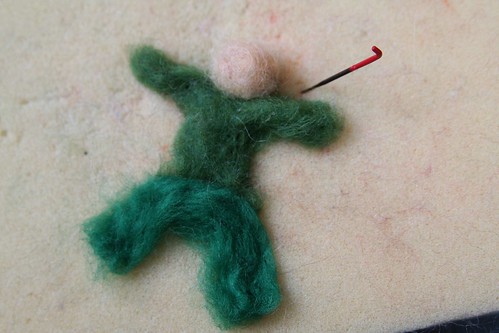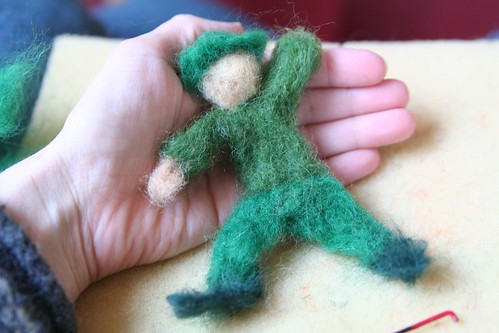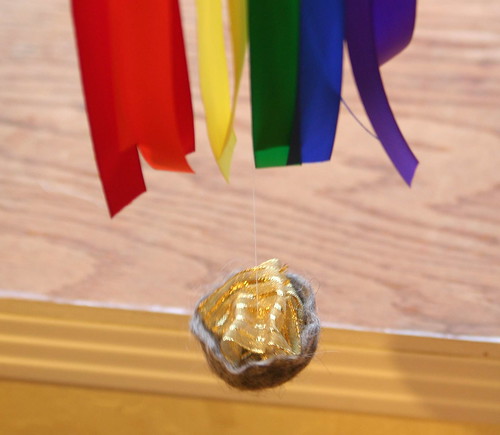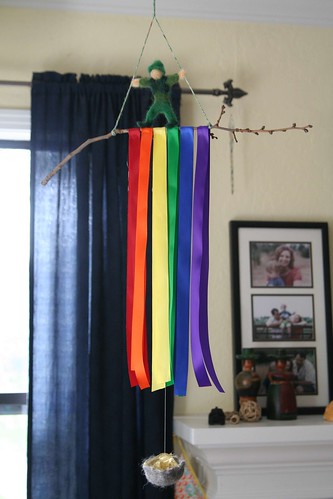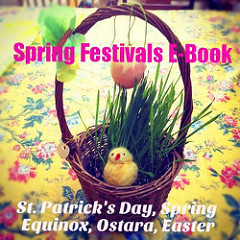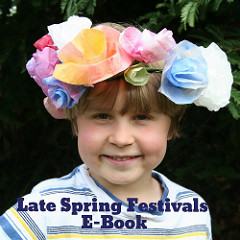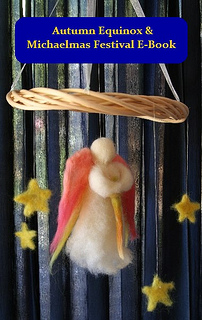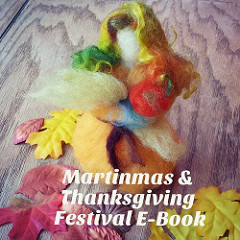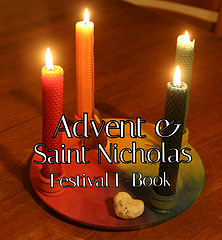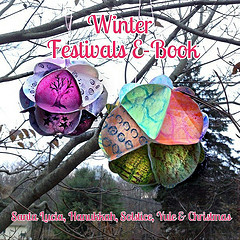
—Tasha Tudor
We have a wide library of Easter and Ostara-themed children’s books around here. It might be because the Easter Bunny usually brings one for my boys. These are our favorites. We go for the non-religious, nature-oriented titles, so if you’re looking for the resurrection story, you’ll need to find a different list. The age recommendations listed here are my own suggestions.


Our newest favorite is Eggs for the Hunting, by Reg Down. We have several of Down’s books and their familiar woodland characters and sweet simplicity make them so charming. Comforting, everyday rhythms of nature and the seasons are mixed in with just the right amount of magic and wonder of the spirit in all things. Featuring darling Tiptoes Lightly (a fairy) and two plucky gnomes (Pine Cone and Pepper Pot), these books never fail to leave us giggling. Eggs for the Hunting is what we’re reading at bedtime now, and even my almost-10-year-old is captivated by it.


The Golden Egg Book is a classic that every kid should get to read at least once. The simple story is by Margaret Wise Brown and the luscious illustrations are by Leondard Weisgard. It was originally published in 1947. This book is wonderful for the 0 to 6 set.
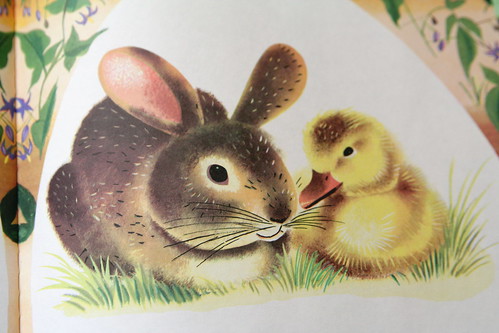


The Country Bunny and the Little Gold Shoes by Du Bose Heyward (pictures by Margorie Flack) is widely considered to be one of the first feminist children’s books. It was published in 1939. I had this book as a child and I loved it. (The picture below was captivating to small me.) The little brown girl bunny wants to grow up to be an Easter Bunny, but before long she’s a mother. They say a mommy bunny can’t possibly do the job of the Easter Bunny, but in fact, she is amply qualified: for she is kind, clever, wise, swift—she has to be to raise her 21 bunny children! (I would say ages 4 to 10; this one is fairly long.)
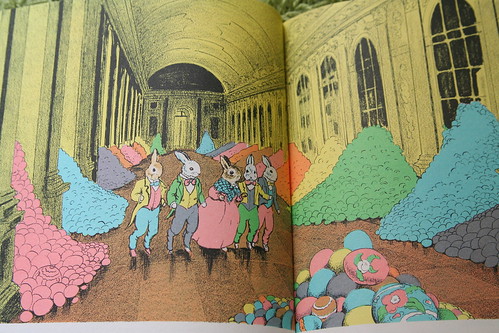


The Bunny Who Found Easter is by Charlotte Zolotow and was originally published in 1959. In this story, a bunny wants to be with other bunnies. An owl tells him that there are always lots of rabbits at Easter, so the bunny goes looking for Easter. He searches through summer, fall, and winter without finding any other bunnies. But in spring, he finds a sweet friend and he’s so happy to know her, he forgets about Easter. Soon enough, by Easter, there are lots of rabbits! He learns that Easter is not a place after all, but a time when everything lovely begins once again. (Ages 0 to 6.)


The Egg Tree (Katherine Milhous, 1950) is a story about a family celebrating Easter with an egg hunt. In the attic, a girl finds a box with gorgeous decorated eggs inside. Grandma had forgotten they were there. They are eggs she decorated when she was a girl and she shows the grandchildren how to decorated them in traditional designs. Then she introduces them to the Egg Tree, which is trimmed with beautifully decorated eggs and so lovely that people come from far and wide to see it. It becomes their Easter tradition. (Ages 4 to 8.)
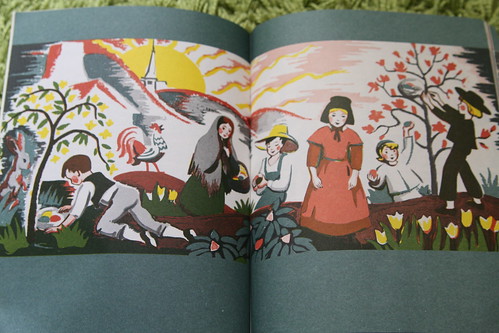


The Easter Egg by Jan Brett is the newest title on my list of rather classic Easter stories. Brett’s illustrations never fail to amaze. They are complex, intricate, and beautiful. There is a competition among the rabbits to create the most beautiful Easter egg. The winner of the competition has the honor of helping the Easter Rabbit hide the eggs for the children. Little Hoppi is participating in the competition for the first time. He finds deciding how to decorate his egg is harder than he thought. When Mother Robin’s egg accidentally falls from the nest, Hoppi takes care of it until it hatches. (Ages 4 to 8.)
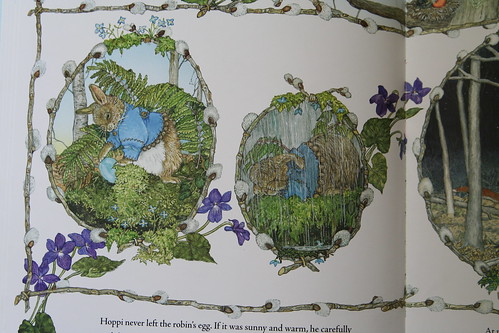


A Tale for Easter by Tasha Tudor was published in 1941 and begins, “You can never tell what might happen on Easter.” It describes how you know that Easter is coming: a new dress from mama and hot cross buns on Good Friday. Then you ask the chickens to lay lots of eggs. The night before Easter, good children will dream the loveliest dreams, such as riding on the back of a fawn who gallops through the woodlands and shows you rabbits, lambs, and Easter ducklings swimming among the lily pads. Tudor’s illustrations are endlessly charming and this is the perfect Easter book for very young children.
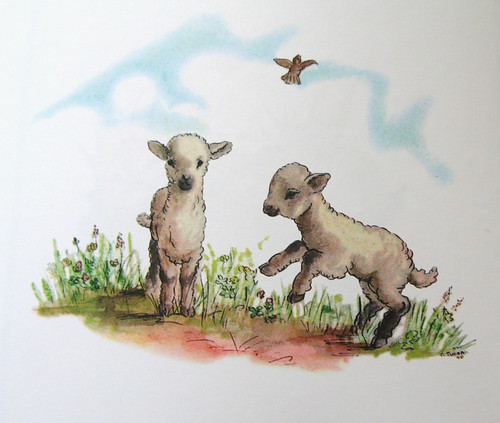


By Sybille Olfers, The Story of the Root Children (1906) is a favorite. Gentle watercolor paintings grace this sweet tale of how Mother Earth must wake the Root Children so they may perform their care-taking duties, such as washing the beetles and bumble bees. Then they can dress in fine clothes and go to the surface, to play in the woods and meadows until autumn comes again. (Ages 0 to 6.)



While the spring equinox was last month, this book, The Spring Equinox: Celebrating the Greening of the Earth by Ellen Jackson, is worth a look. It tells of spring celebrations in many cultures and throughout history, reminding us that the many symbols and traditions we still follow have roots in the past. The book ends with a retelling of the myth of the goddess Ostara and how the Easter hare came to be associated with eggs. (Ages 4 to 10.)
And here are two others that we’ve checked out from our library, but don’t own. I fully recommend these as well.


Rachenka’s Eggs is the story of old Babushka who saves a goose and nurses her back to health. The goose accidentally knocks over the old woman’s paint pots, which she uses to create beautiful Ukrainian Easter eggs. The eggs throughout Patricia Paola’s book are gorgeous and feature traditional designs. The goose begins to lay beautiful, decorated eggs, and eventually returns to the wild, but not before leaving behind an egg that hatches into a gosling to be Babushka’s companion. (Ages 4 to 10.)


The Birds’ Gift: A Ukrainian Easter Story is another delight. This folktale retold by Eric Kimmel is lovely. A young girl inspires a whole village to save a flock of golden birds trapped by a sudden, fierce snowstorm. The birds shelter in the church over the winter and are released in the spring, even though the villagers have come to love them dearly. At Easter time, the birds return, leaving hundreds of gloriously decorated Easter eggs in the grasses. This book features pysanky-inspired illustrations by Katya Krenina. (Ages 4 to 10.)
